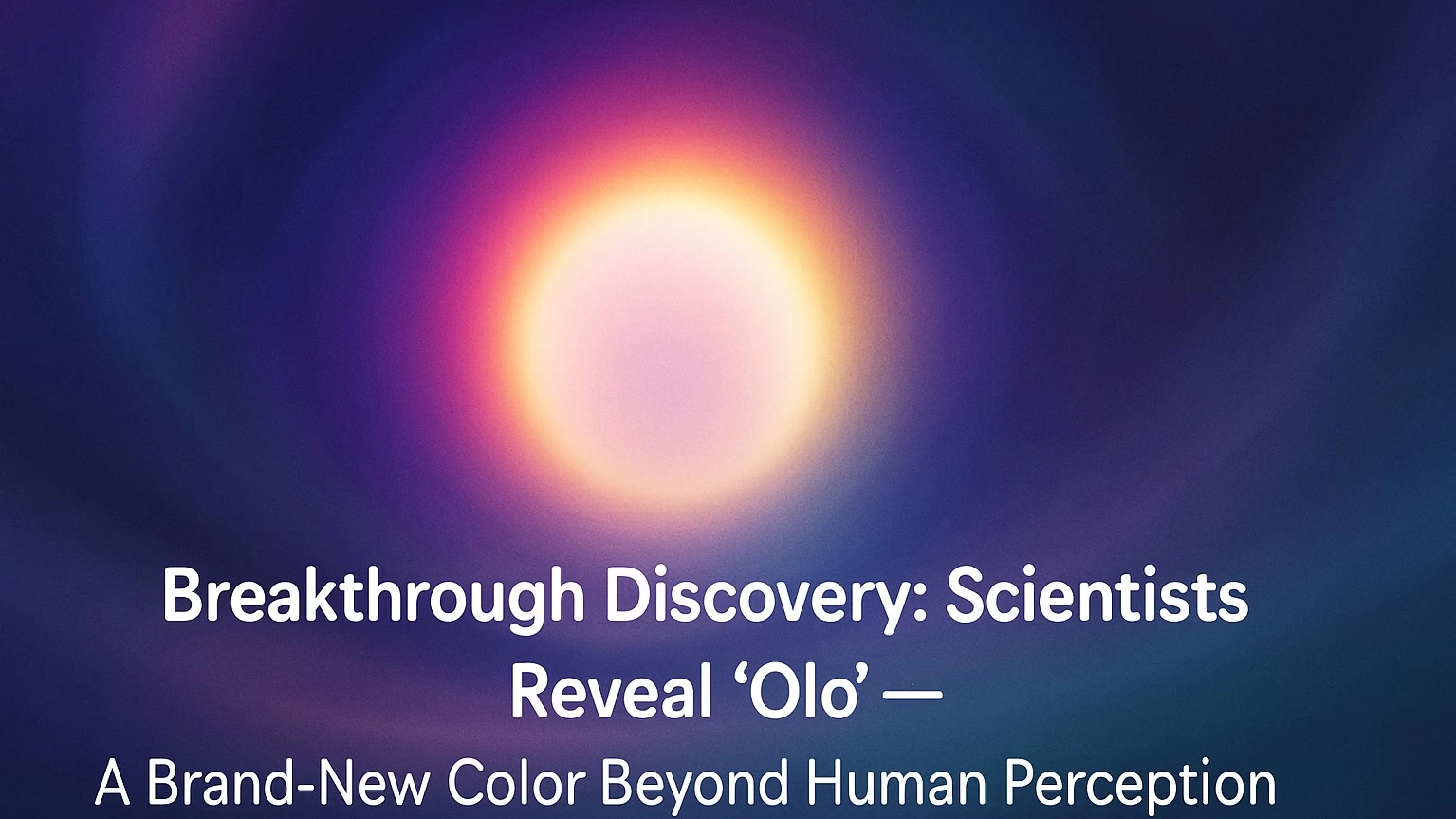Read Time : 4 min
In a scientific breakthrough that could alter our very understanding of vision and perception, researchers have announced the discovery of a new color—one that humans have never seen before. Named “Olo,” this enigmatic color challenges everything we thought we knew about the visible spectrum.
The discovery was made by an international team of neuroscientists and physicists who were conducting advanced experiments on human visual processing. While testing how the brain interprets overlapping light frequencies and neural stimulation, participants began to describe a visual experience that defied all known color categories. This was not a mere blending of hues or an optical illusion—it was something entirely new.
“It’s like watching your mind paint something that the eyes alone could never show you,” said Dr. Eliana Monroe, the project’s lead researcher.
What Is “Olo”?
Unlike traditional colors that exist within the electromagnetic spectrum and are visible through combinations of red, green, and blue light, This color doesn’t exist as a wavelength. Instead, it is the result of a specific pattern of brain stimulation that creates a completely new visual response.
Researchers explain that this new color is a metachromatic perception—meaning it is perceived through the brain’s interpretation of a signal, rather than through direct light entering the eye. In essence, your brain is generating the experience of a color that no natural light could ever produce.

Participants exposed to this color through specially designed neural interface headsets consistently described “Olo” as indescribable, dreamlike, and otherworldly. While no two accounts were identical, they all agreed: it was nothing like red, blue, green, or any combination thereof.
The Science Behind the Discovery
To achieve this experience, the researchers used a combination of high-resolution retinal stimulation, neural decoding, and artificial visual cortex activation. In simple terms, they bypassed the traditional route of seeing color through light, and instead directly influenced how the brain processes visual information.
This breakthrough not only introduces a new “color,” but also reveals that our visual limitations may be more neurological than physical. For decades, scientists believed that the range of colors we could perceive was fixed by biology. “Olo” challenges that assumption.
Why This Matters
The implications are vast. Beyond the philosophical excitement of discovering a new sensory experience, the development of “Olo” could lead to new technologies in:
- Virtual and Augmented Reality: Immersive experiences that go beyond known color spaces.
- Therapeutic Neuroscience: Stimulating new brain regions to aid vision therapy or mental health.
- Art and Design: Imagine creating visuals that evoke entirely new emotions and perceptions.
“This isn’t just about adding a new crayon to the box,” said Dr. Monroe. “It’s about opening the lid to a box we didn’t know existed.”
The Road Ahead
Currently, experiencing this new color requires specialized equipment not yet available to the public. However, the team is developing a consumer-friendly version of the neural headset, with the hope of releasing a demonstration in the near future. This could allow individuals to witness “Olo” in controlled environments such as science museums, digital art exhibitions, or VR arcades.
Until then, this new color remains both real and unreachable—a color that exists, but only in the mind’s eye. As we continue to explore the relationship between perception and reality, one thing is clear: there’s still so much left to see.
Philosophical Implications of “Olo”
This discovery also raises profound philosophical questions about the nature of reality and perception. If the human brain can experience something entirely new simply through different patterns of stimulation, then how much of what we call “reality” is shaped not by the outside world, but by the way our brains interpret it? This revelation echoes age-old debates in philosophy and cognitive science about whether we perceive the world as it is—or merely as our minds allow us to. This new color is a reminder that reality may be far more subjective than we ever imagined.
Also Read

Add a Comment